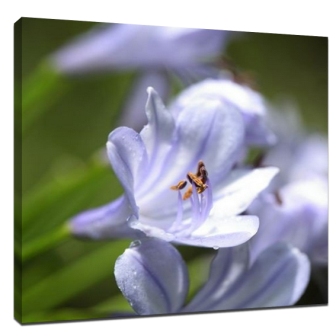Knowledge and skills of macro photography
Knowledge and skills of macro photography
Macro Photography is a special Photography method that is different from conventional Photography. Macro Photography is a kind of super close shooting of relevant objects and subjects, and can get the image larger than the original object with a 1:1 magnification rate, or even higher. The subjects of photography are mostly ecological photography such as insects, plants and flowers, which bring extremely detailed images for some small lives as small as 10mm to 30mm. Through the photographer's creativity, images of more artistic and academic value are obtained.
(1) Photographic equipment
In order to obtain the original image with a 1:1 magnification ratio or above, a single-lens reflex reflector with high pixel should be equipped, and one piece should be equipped with 1: 1 amplification ratio of macro lens, there are different macro lens focal length, composed of 60 mm, 90 mm, 100 mm to 200 mm, the changing of science and technology, some more macro lens has been referred to as "VR", "IS" and "OS" anti-shock lens, for the photographer to hold when shooting also brings a clear view of macro images, even with no shock, also can be equipped with "single foot rack" or "tripod" to stabilize the filming equipment. When need, also want to be main body use "flash" fill light.
(2) Amplification ratio of 1:1
In general, we may not put some conventional photographic images on the screen to amplify "smell", presumably to watch the whole image without three smoke like elements, "pine, you," can the door after our minimum requirement, however, you might as well use macro lens, enlarge home "smell", maybe there will be a greater surprise, encourage everyone to have more interest on macro photography.
(3)Focus skills
Macro lens structure is different from the other lens, because want to shoot the picture of the fine, the lens Focus speed is relatively slow, especially a telephoto lens, such as 180 mm, 200 mm macro lens Focus speed is slower, you can "Manual Focus" or "full-time Manual Focus" the subject, "full-time Manual Focus (Full - time Manual Focus)" function allows the photographer to autofocus, also can do the Manual Focus instant fine-tuning, greatly save time, avoid missed the important moment. You can also use the focus ring to manually fine-tune the subject first, and then use the "auto focus" function to lock the subject, in order to achieve the best shooting effect. The photographer needs to practice the function repeatedly, the consummate use, avoids in the photography time fluster, loses the good opportunity.

(4) Camera setting
The appropriate shooting setting is one of the important elements of an image. Once the setting is improper, the large aperture setting will make the image ambiguous, or the thin aperture setting will make the image subject and the person of the scattered scene indiscriminate, making the alternative vision of the scattered scene messy beauty. The ISO should not be too high. Too high ISO will make the image too noisy, which will damage the visual beauty of the image. The slow shutter may also be blurred due to the micro movement of the environment.
(5) The use of a monopod or tripod reduces vibration
Since the subject of the shooting is very small, macro photography is relatively easy to generate vibration. In order to reduce vibration and get a clearer image, the use of tripod or monopod will help alleviate the problems caused by vibration, and the use of shutter release will result in twice the effort. But be aware that using a tripod reduces the photographer's mobility, and avoid using a tripod for some species that move faster. In recent years, many newly developed macro lenses developed by lens brands have added the function of shock resistance, which greatly improves the photographer's mobility. People should also pay attention to the fact that if the lens with shock resistance technology is used to assemble the foot frame, it is necessary to turn off the function of shock resistance, so as to avoid the blurring of the picture caused by the active detection of shock resistance.
6) Use the flash light to supplement the light, and make good use of the light source
In order to get a more ideal image, it is best to shoot the subject at the minimum focusing distance of macro lens. However, since the lens is close to the subject, it is likely to block some light, so it is indispensable to supplement light with flash. Single mirror reflectors can be built in the overhead light, or external overhead flash, there are also some for macro - camera annular flash. Due to the extremely close shooting distance, the photographer can "flash exposure compensation" or "manual adjustment" to reduce the output rate of the flash, so as to avoid overexposure.
Recent Posts
-
Affordable Large Canvas Prints: How to Find Cheap Canvas Prints Without Compromising on Quality
If you’ve ever thought about decorating your space with large canvas prints, you might have he …18th Feb 2025 -
Cheap Canvas Prints for Painting: Affordable Art Supplies for Every Artist
For artists, finding high-quality yet affordable materials is essential to fueling creativity withou …17th Feb 2025 -
Floating Frames for Canvas: Elevate Your Wall Art with Style
When it comes to displaying canvas art, the right frame can make all the difference. Floating frames …14th Feb 2025
